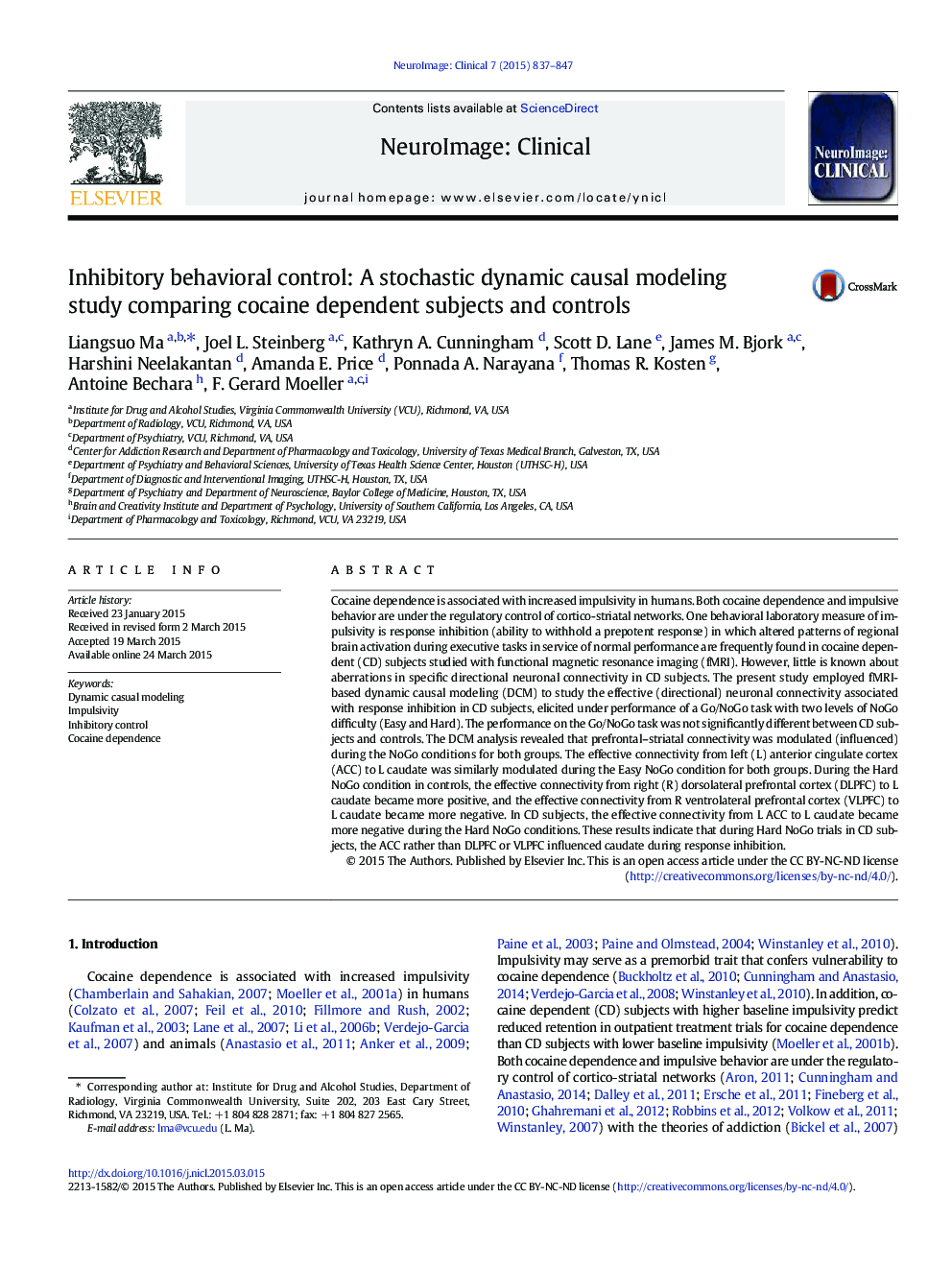| Article ID | Journal | Published Year | Pages | File Type |
|---|---|---|---|---|
| 3075140 | NeuroImage: Clinical | 2015 | 11 Pages |
•Dynamic causal modeling was used to study response inhibition in cocaine dependence.•A Go/NoGo task with two levels of NoGo difficulty (Easy and Hard) was used.•Patients and controls used anterior cingulate cortex to control caudate during Easy NoGo.•Controls used dorsolateral/ventrolateral prefrontal cortex to control caudate during Hard NoGo.•Patients continued using anterior cingulate cortex to control caudate during Hard NoGo.
Cocaine dependence is associated with increased impulsivity in humans. Both cocaine dependence and impulsive behavior are under the regulatory control of cortico-striatal networks. One behavioral laboratory measure of impulsivity is response inhibition (ability to withhold a prepotent response) in which altered patterns of regional brain activation during executive tasks in service of normal performance are frequently found in cocaine dependent (CD) subjects studied with functional magnetic resonance imaging (fMRI). However, little is known about aberrations in specific directional neuronal connectivity in CD subjects. The present study employed fMRI-based dynamic causal modeling (DCM) to study the effective (directional) neuronal connectivity associated with response inhibition in CD subjects, elicited under performance of a Go/NoGo task with two levels of NoGo difficulty (Easy and Hard). The performance on the Go/NoGo task was not significantly different between CD subjects and controls. The DCM analysis revealed that prefrontal–striatal connectivity was modulated (influenced) during the NoGo conditions for both groups. The effective connectivity from left (L) anterior cingulate cortex (ACC) to L caudate was similarly modulated during the Easy NoGo condition for both groups. During the Hard NoGo condition in controls, the effective connectivity from right (R) dorsolateral prefrontal cortex (DLPFC) to L caudate became more positive, and the effective connectivity from R ventrolateral prefrontal cortex (VLPFC) to L caudate became more negative. In CD subjects, the effective connectivity from L ACC to L caudate became more negative during the Hard NoGo conditions. These results indicate that during Hard NoGo trials in CD subjects, the ACC rather than DLPFC or VLPFC influenced caudate during response inhibition.
